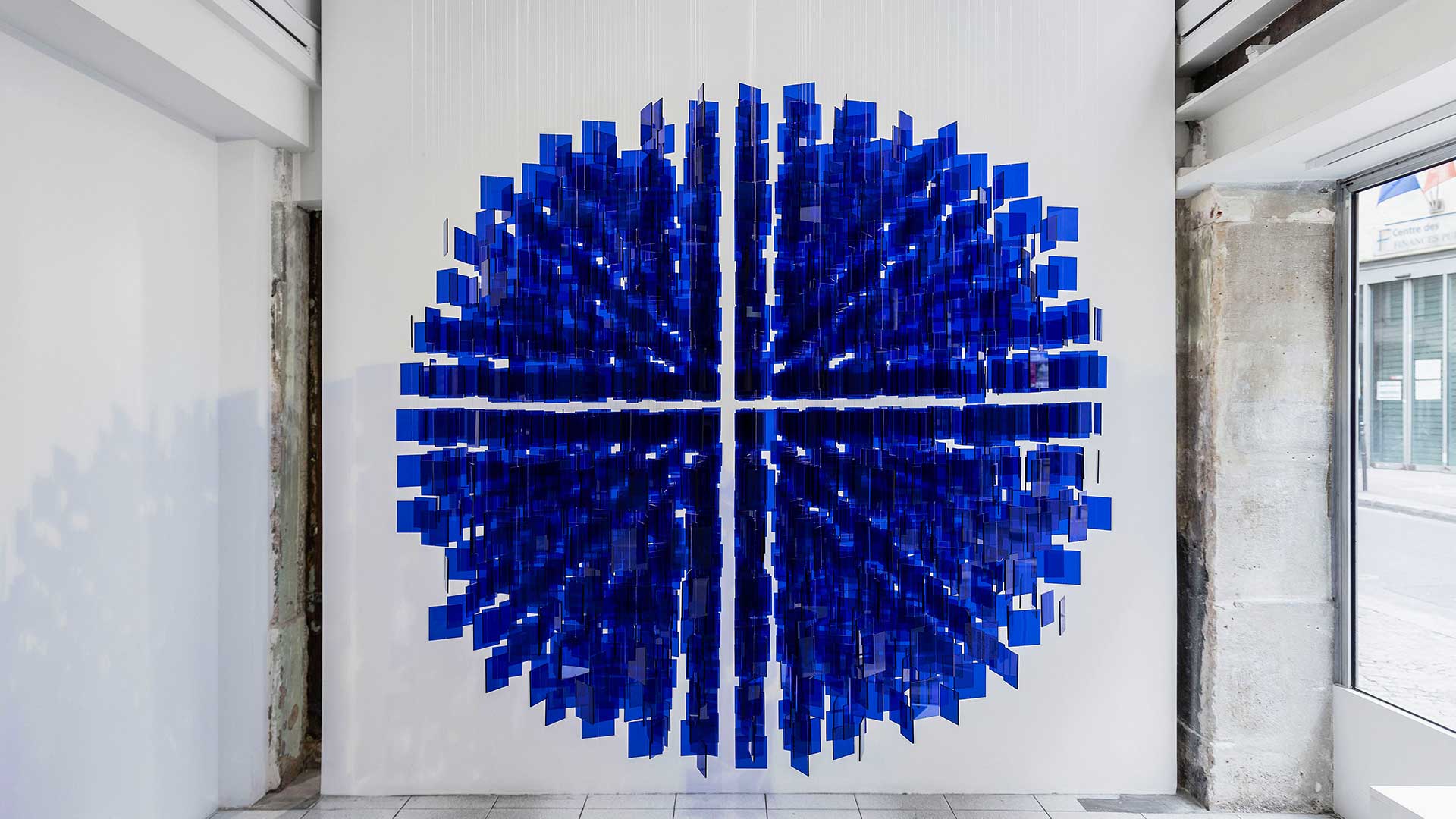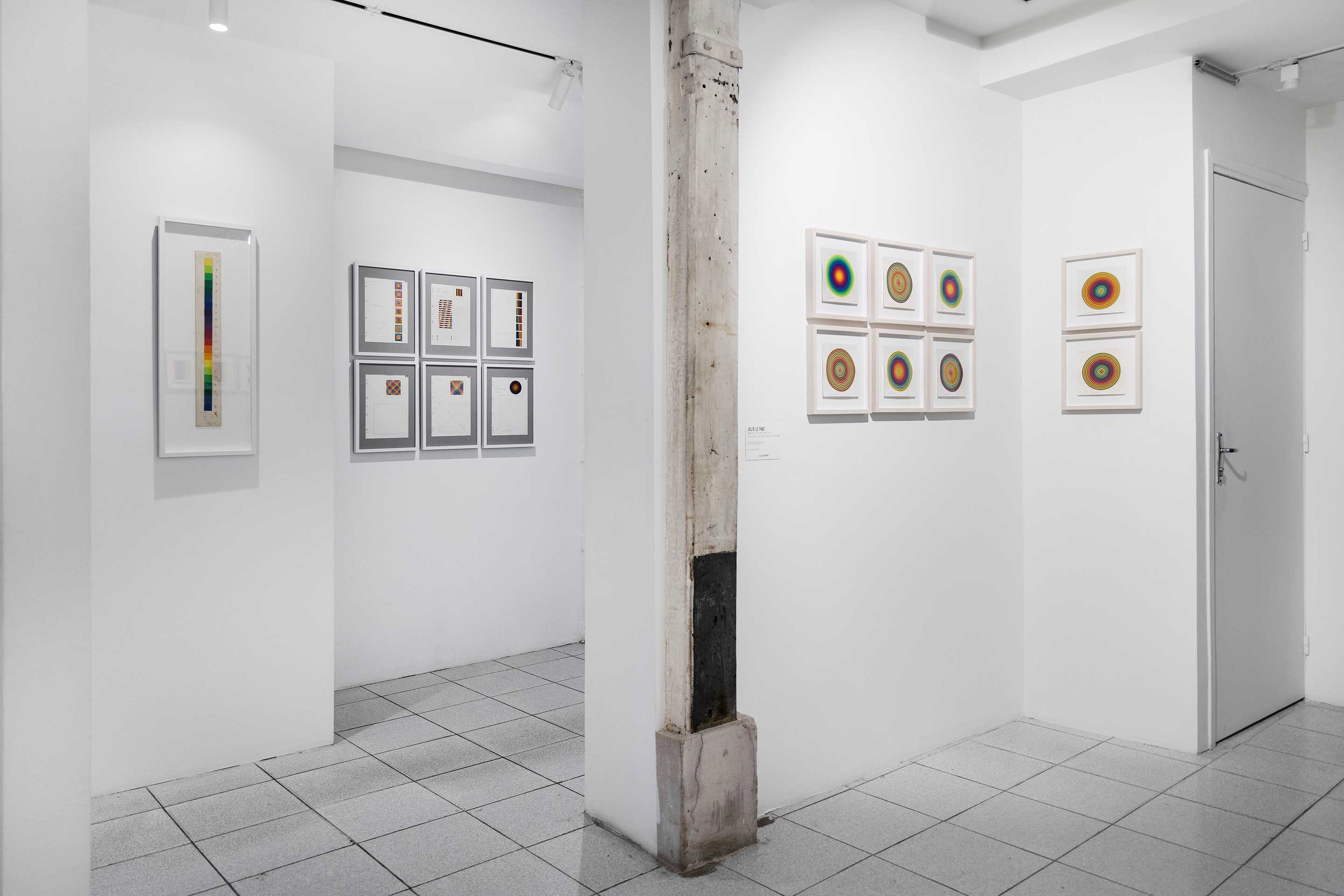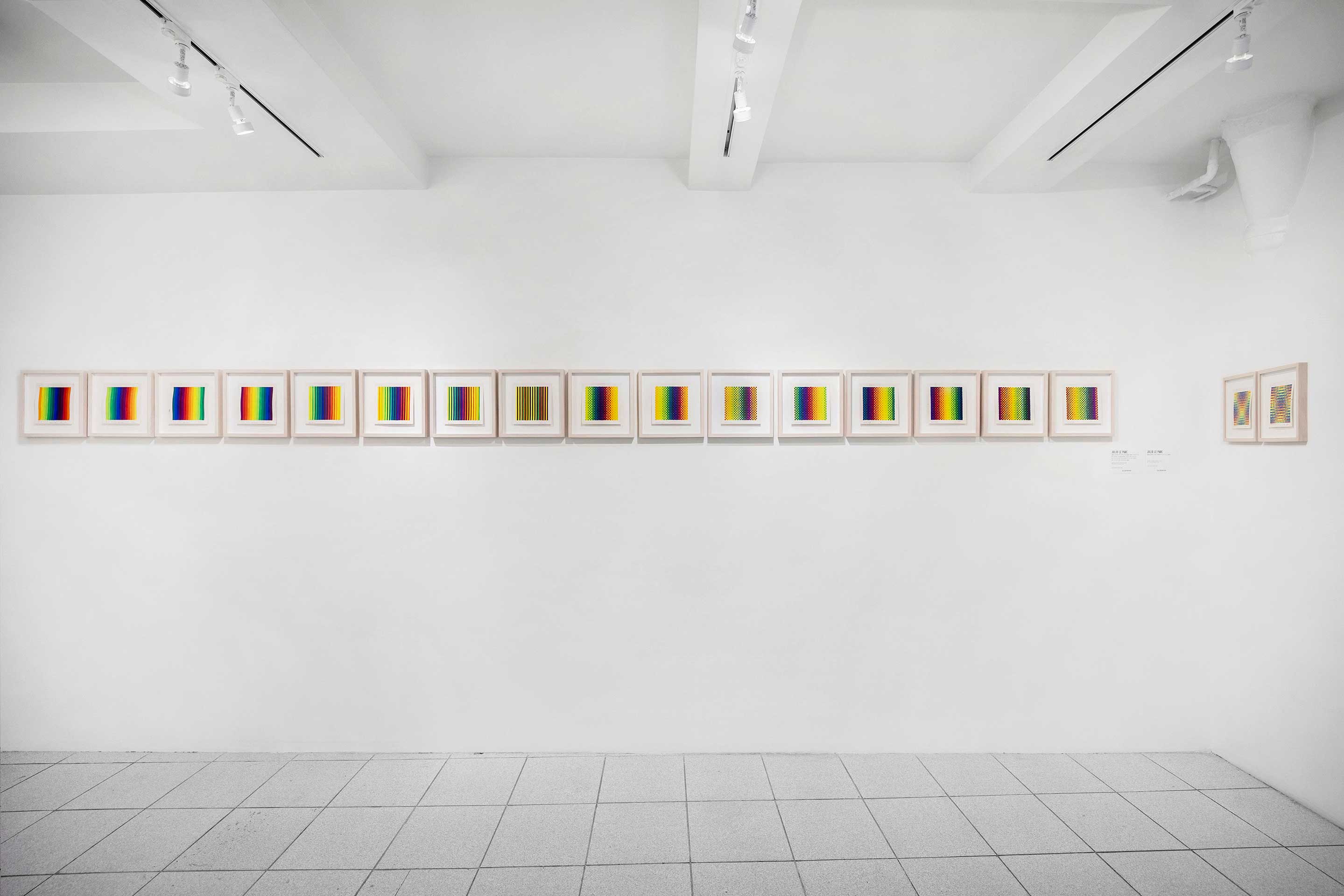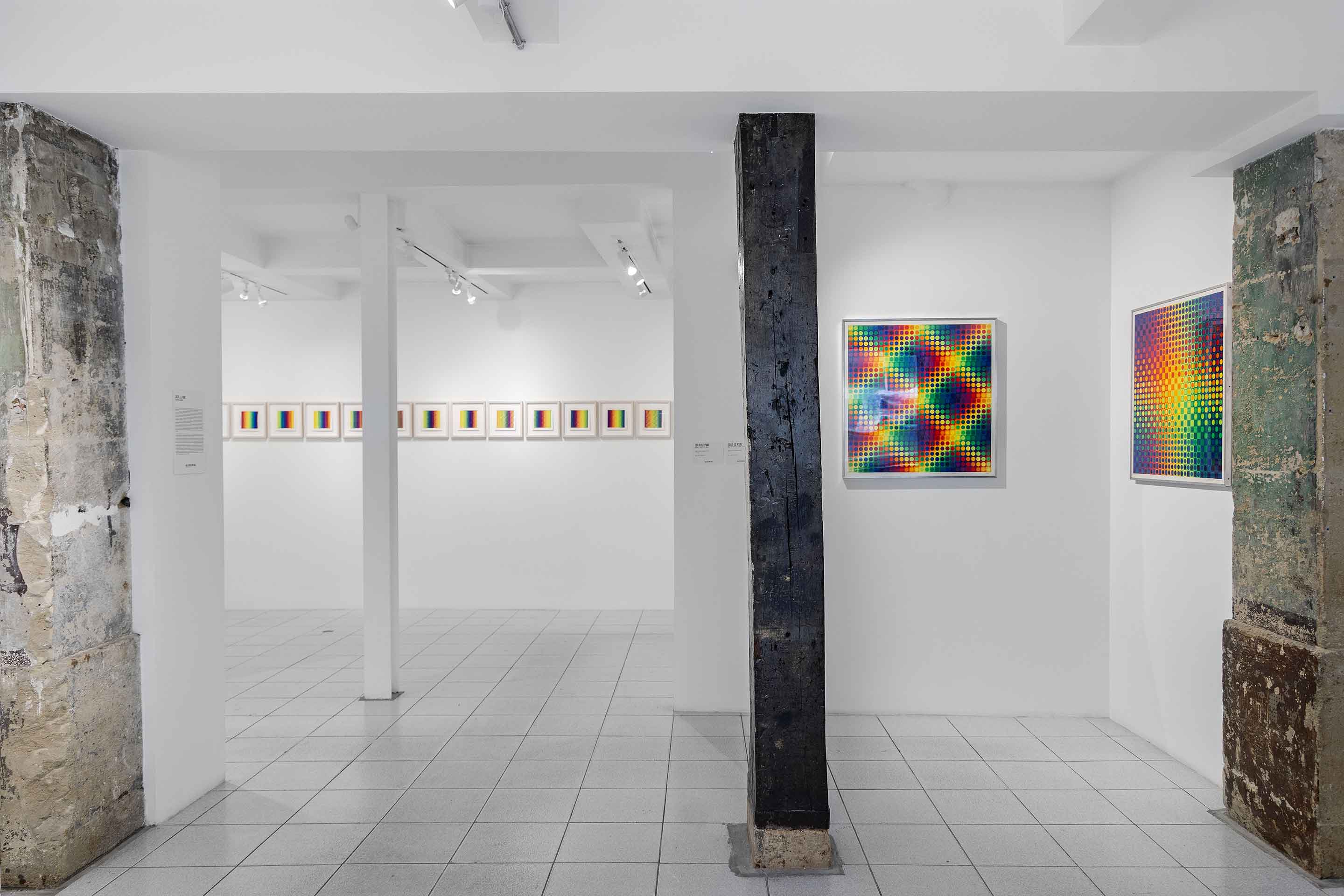Galleria Continua is pleased to present the first exhibition dedicated to Julio Le Parc at the gallery since the announcement of the artist’s representation in May 2023. A painter, sculptor and visual artist from Argentina who has lived in France since 1958, Julio Le Parc is a precursor of kinetic art and Op Art, and winner of the International Grand Prize for Painting at the 33rd Venice Biennale in 1966. Today, he is celebrated as a major figure in the history of art.
Presented at Galleria Continua / Paris, Le début brings together a selection of over fifty works on canvas or in three dimensions. The exhibition includes gouaches on paper from various series produced in the early 1970s, representative of the artist’s singular artistic language, as well as framed preparatory projects, collages on cardboard and a large-scale mobile, the precursor of the artist’s most important monumental installation, at the Tabakalera, an international art centre in San Sebastián (Spain).
Initiated when Le Parc arrived in Paris in late 1958, the artist’s first experiments with the notion of the surface were developed in reaction to what was then predominant in the art world: Art Informel, Tachism, Action Painting, Lyrical Abstraction etc. Le Parc took as his starting point the work of Vasarely (in black and white), the texts of Mondrian, the analysis of certain productions by Albers and, more generally, Constructivism or approaches that included the notion of movement.
The artist creates distance between the work and its creator, eliminating not only any trace of manual execution, of “brushstrokes”, but also any subjective composition - still evident at the time in the work of the constructivists. He seeks to build unitary systems that govern surface, form and their relationship on the plane, within a given program. The systems themselves are unimportant: they simply achieve a result, and occupy the viewer’s peripheral vision.
Initially developing his work in black and white, or even grey, the artist extended it to colour in 1958 and 1959, careful to avoid any particular effect. He applies the same treatment to colour as to form, using not just a few colours, but all the Colors, pure and unadulterated by black or white.
Forms lose their individuality in favour of an active surface that can establish a visual connection with the viewer, offering a panoply of potential changes contained within each work. Each gouache or painting produced by this or that combination is for the artist a particular moment, an interpretation of the incessant movement of changing colours in which he finds himself swept up.
Presenting Sphère Bleue, a 2018 installation, the exhibition Le début focuses on Julio Le Parc’s work around “continual mobiles”. Crafted from small, suspended blades, these incredibly organic-looking objects unfurl against a background from which they stand out. The irregularity of the small blades means that each point of light gives the sensation of being an object with an existence of its own, powerfully exciting the imagination.
In early 1960, Le Parc began experimenting with mobile elements using light boxes, a kind of diaphragm that modifies shapes by letting more or less light pass through. Through these devices, he questions a series of issues: the diversity of situations within a single experience, notions of movement, instability and probability, and the consideration of contingencies external to the work, in a characteristic distancing of his work from the notion of a stable, unique and definitive body of artwork.
Following on from Sphère Bleue, a major and lasting fruition of this reflection was inaugurated in 2020 on the Plaza de la Tabakalera, in San Sebastián (Spain), opposite the eponymous international arts centre. Taking its name from the Basque word for “cube”, the monumental Kuboo installation is Le Parc’s largest mobile work to date. The 11-meter-diameter mobile is composed of 2,660 polished stainless steel parts and weighs one tonne. The work, which reinterprets the motifs of Sphère bleue, is an artistic creation resulting from constant research into and experimentation with space, light and movement.
Julio Le Parc (born 1928 in Mendoza, Argentina, and has lived and worked in Cachan, France since 1958), a major figure within kinetic and contemporary art, was one of the co-founders of the Groupe de Recherche d’Art Visuel (GRAV) in Paris in 1960, alongside Horacio Garcia Rossi, Francisco Sobrino, François Morellet, Joël Stein and Jean-Pierre Vasarely (Yvaral).
The artist has participated in numerous solo exhibitions at leading museums and institutions such as Palais de Tokyo, Paris; Metropolitan Museum of Art, New York; Perez Art Museum, Miami and Serpentine Gallery, London, among others. This socially committed artist was expelled from France in May 1968, after participating in the Atelier Populaire artist protest group and its demonstrations against major institutions.
A defender of human rights, he fought against dictatorship in Latin America. An uncompromising personality, in 1972 he decided to reject the organisation of a retrospective at the Musée d’Art Moderne de la Ville de Paris by flipping a coin.
Read more +
Read less -







 Sign in with email
Sign in with email






